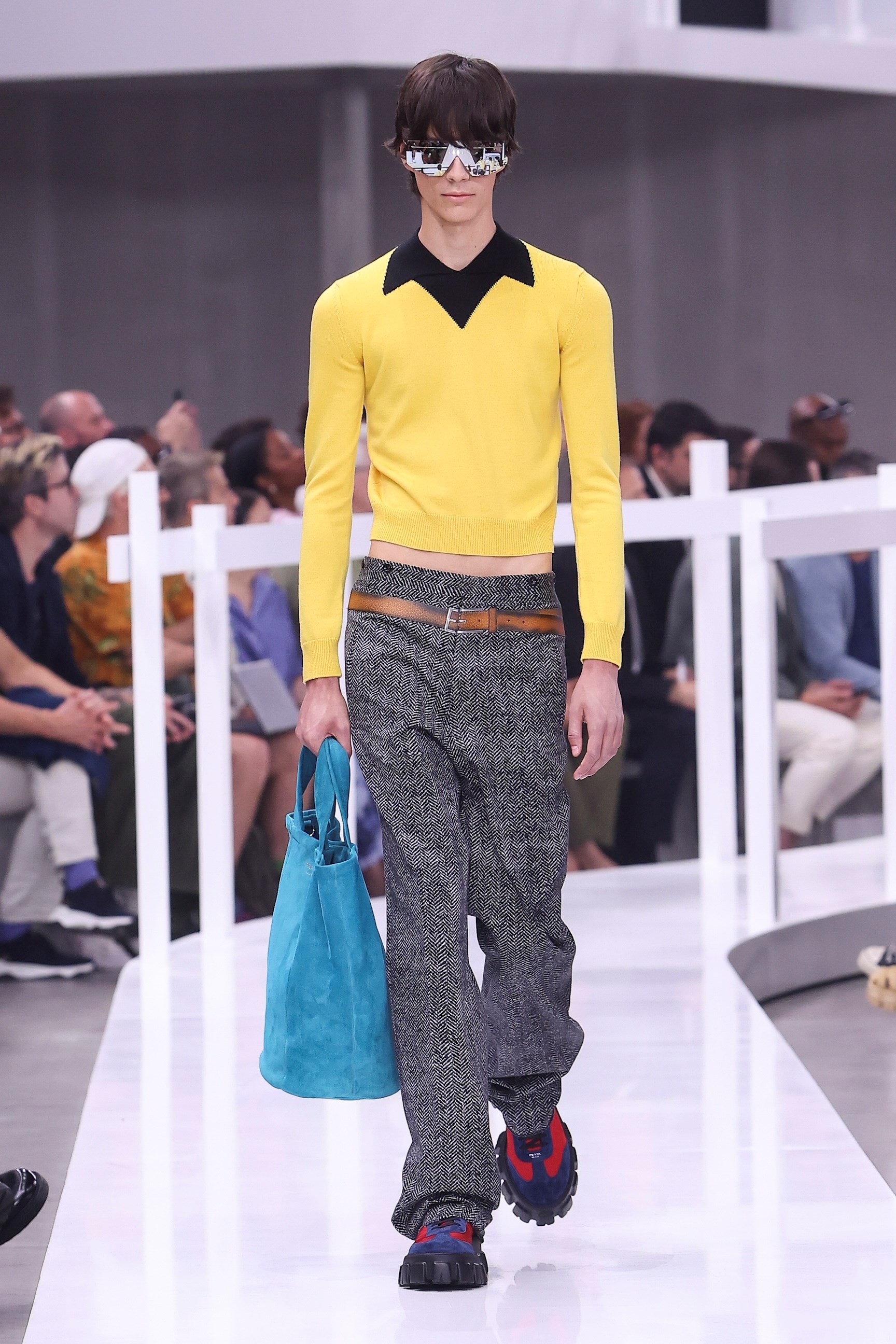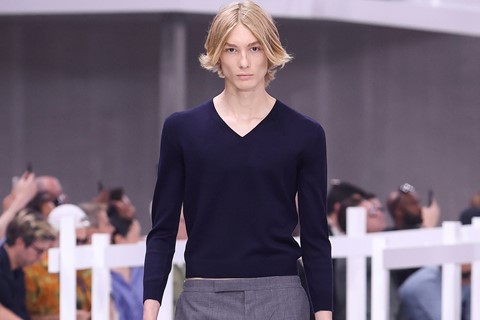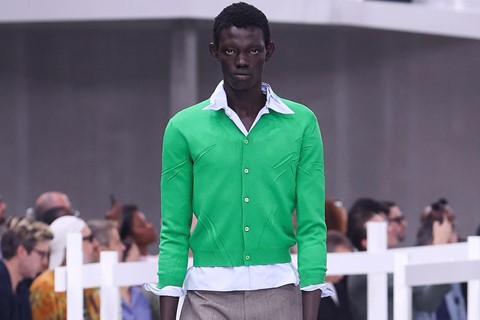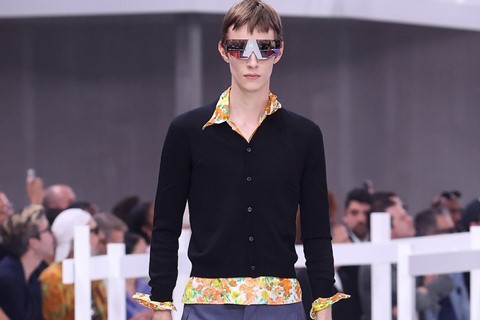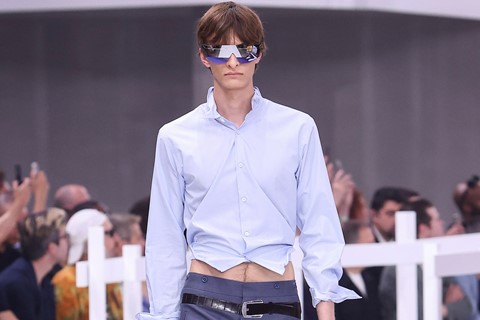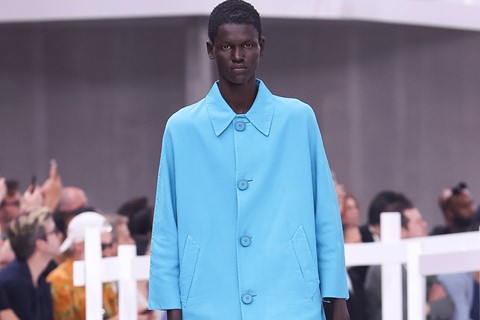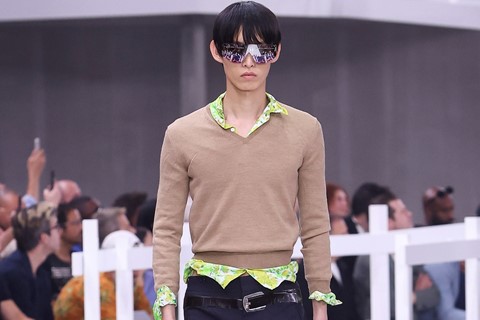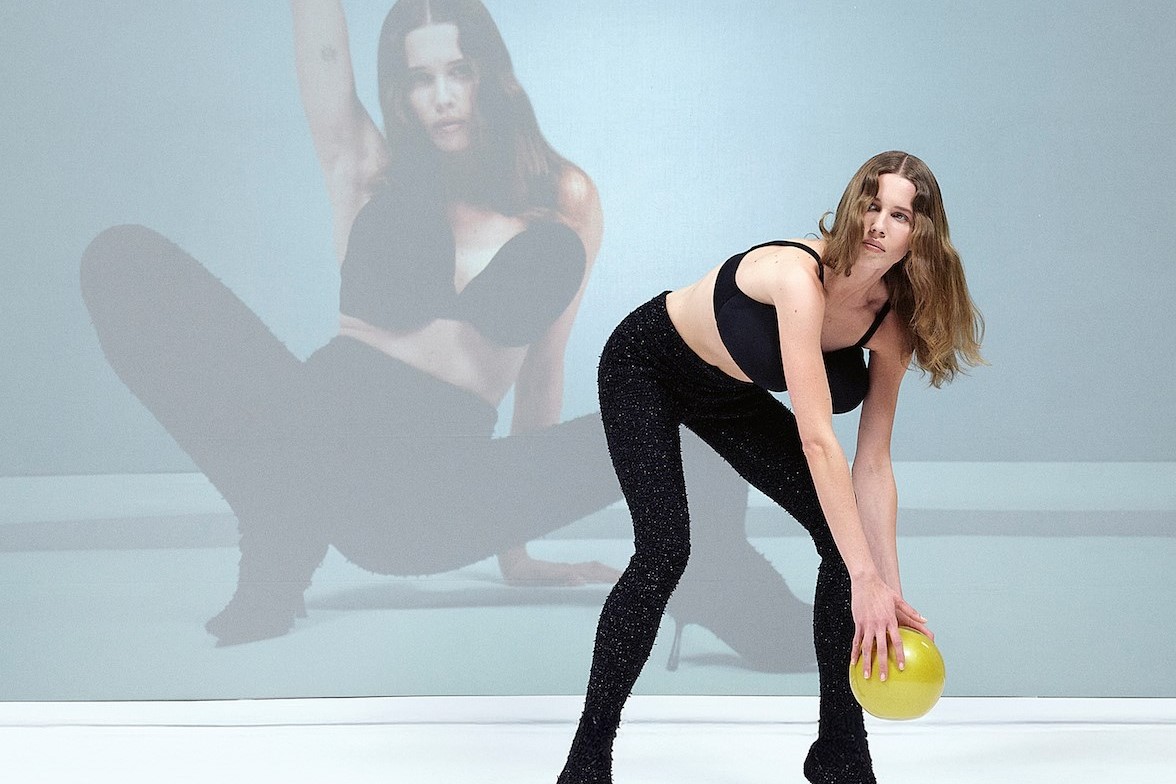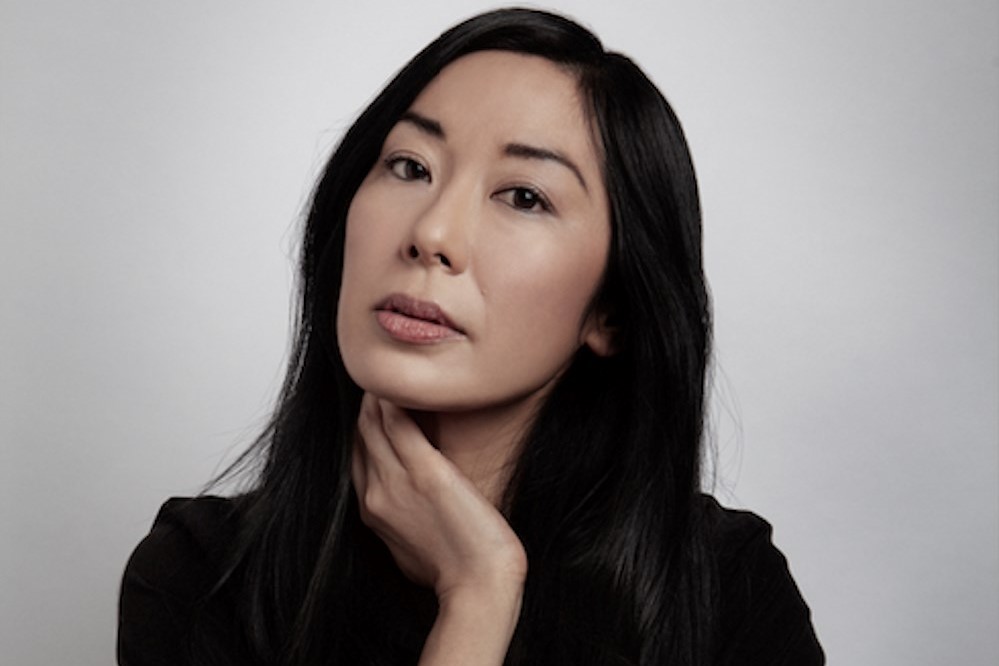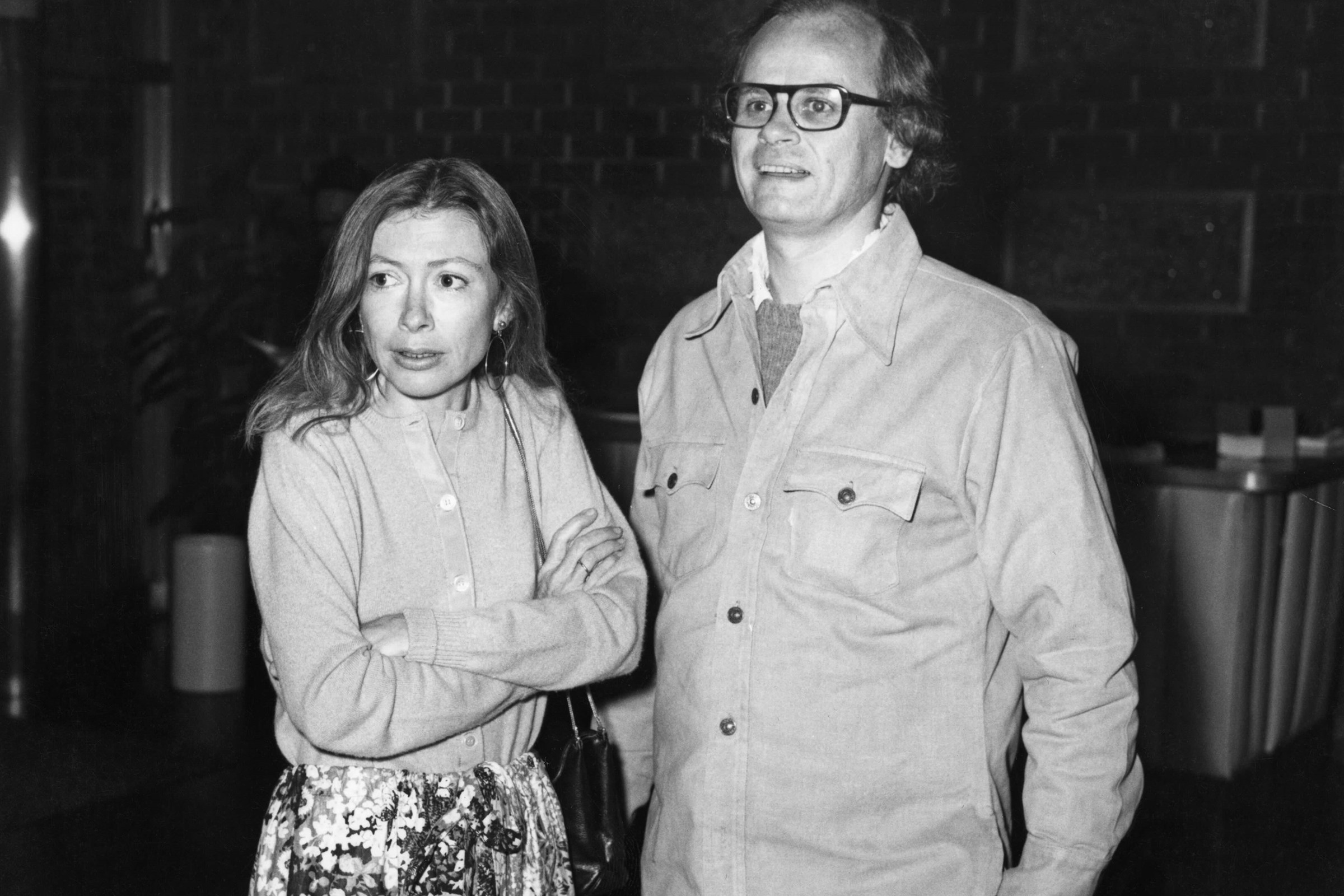Part of the genius behind both what and how Miuccia Prada and Raf Simons design is that they consider beyond the catwalk, and outside of the clothes themselves. The pieces are great, sure, but they are part of a wider dialogue with the world, something bigger and more meaningful.
Their latest Spring/Summer 2025 menswear show was a prime example. Real and fake was the broad idea, a reflection of every inescapable facet of contemporary culture – Restylane-plumped lips, AI-generated imagery, filters and airbrushing, a world labouring at its own counterfeit. Not to mention dupe culture – including, of course, multiple direct rip-offs of Prada. Then again, Miuccia Prada met her husband, Patrizio Bertelli, at a trade fair in the late 1970s where she accused his rival company of producing knockoffs of her bags. So fake isn’t always such a bad thing.
It certainly wasn’t this time at Prada, where the idea boiled down neatly to the arresting image of apparently simple outfits getting closer and closer, and transforming before your eyes. The models bounded out of a simplistic, fairytale hut perched high on stilts, with techno music thumping, your perception shifting with every step. A cardigan and shirt were actually fused into a single garment, as were marinières and knotted foulards, belts were 3D-printed, like a memory of function, inlaid into trousers that pretended to be tweed. Collars, cuffs and hems were twisted, wired to look as if they were being blown away, as we all were.
Then through all the fake, cut the real – literally. The Prada triangle became a no-logo, an absence of marking cut through the nape of some pieces, exposing under layers or, occasionally, when they all lined up, the skin of the body beneath. In a show full of fakery, in a world full of imitation, it felt like final evidence of physical reality.
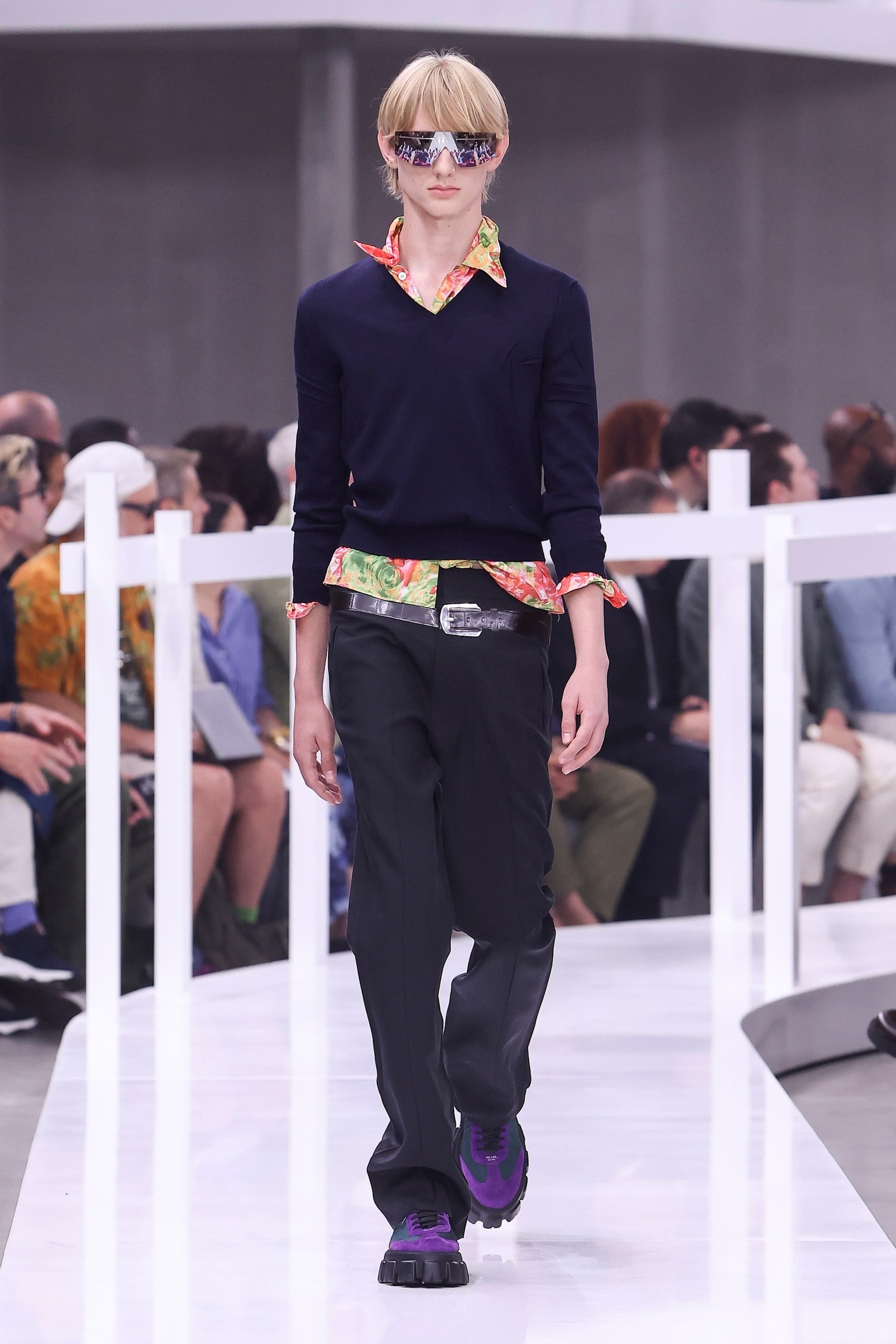
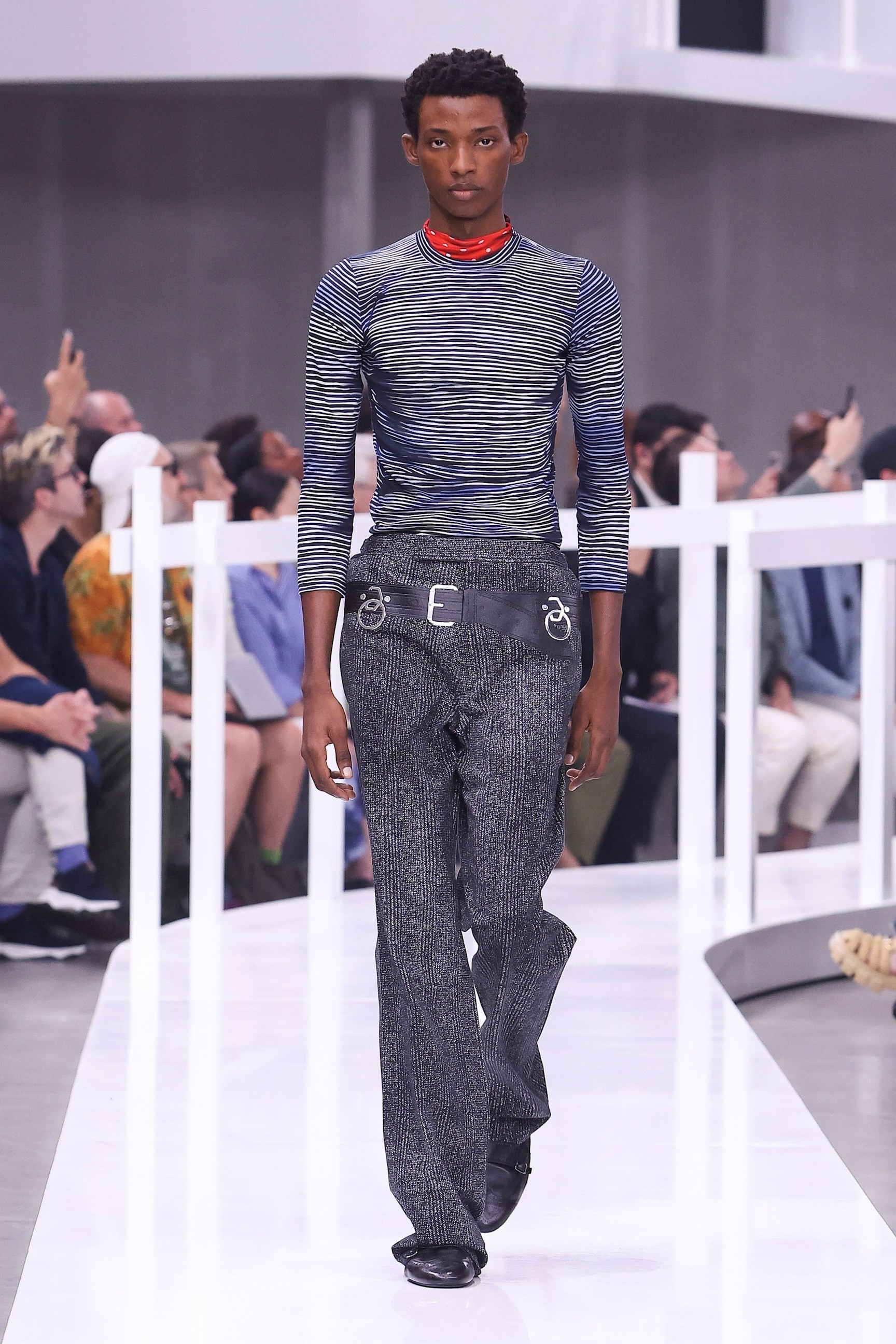
It’s easy to intellectualise a show like this, to drag out the Jean Baudrillard and Guy Debord and deconstruct society’s precession of simulacra. But Prada and Simons both insisted it was about spontaneous ideas, reactions to stimuli rather than a deep and over-considered intellectual treatise on clothes. “We wanted to make this about what you want to wear now,” they said. “The essence, the truth, is simply that.” And there was plenty to wear here – a sense of optimism and spontaneity, a slight childishness – that stilt-based hut could have been a child’s drawing. That chimed with superhero-inspired sweaters, simple shapes and gleefully paint-bright colours, echoing the colours glowing from prints created in collaboration with the estate of the mid-century Expressionist painter Bernard Buffet, which the designers likened to concert T-shirts, albeit championing art affiliation rather than music. His palette was used on outerwear in cotton poplin, satin gabardine, drill and doublé – brilliant canvasses for the saturated hues.
Bernard Buffet may have been characterised as a ‘Miserabilist’, but this collection vibrated with a simple positivity. “Freedom” was the word Prada and Simons used. There was nothing flat about that feeling.
